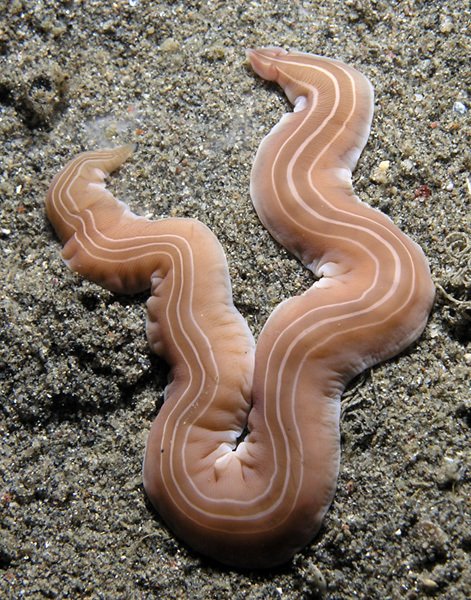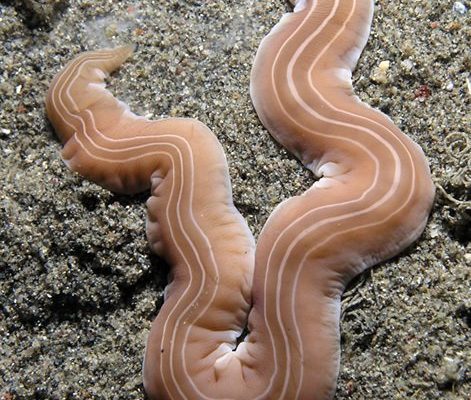
Think of citizen science as a way for you to become a part of the scientific community, even if you don’t have a formal science background. Just like how birdwatchers record their sightings to help track bird populations, you can monitor ribbon worms and gather data that helps scientists understand their behavior and habitats. In this article, we’ll dive into the world of ribbon worms, how you can get involved in citizen science projects, and why your contributions matter.
What Are Ribbon Worms?
Ribbon worms, belonging to the phylum Nemertea, are a group of invertebrates that can be found in marine, freshwater, and even terrestrial environments. They come in various colors and sizes, with some species measuring up to 30 meters long! Their bodies are soft and elongated, resembling ribbons or noodles, which is how they get their name.
You might be wondering, what makes these worms so special? Well, ribbon worms are known for their unique feeding system. They possess a special structure called a proboscis, which they can extend to capture prey. They predominantly feed on small invertebrates, and their role in the ecosystem helps maintain a balanced food web. By monitoring ribbon worms, we can gain insight into the health of our waterways and the impact of human activities like pollution.
Why Citizen Science Matters
Citizen science has gained traction in recent years, and for good reason! This approach allows non-professionals to contribute to real scientific research. By participating in monitoring ribbon worms, you’re not just collecting data; you’re also increasing public awareness about biodiversity and the importance of marine ecosystems.
Here’s the thing: scientists often face resource constraints. They can’t be everywhere at once. That’s where citizen scientists come in! When everyday folks like you get involved, it significantly broadens the scope and scale of research. Your observations can provide valuable data that might otherwise go unnoticed. Plus, you might discover something new and exciting in your local waters.
Getting Started with Monitoring Ribbon Worms
So, how do you start monitoring ribbon worms? First, you’ll want to familiarize yourself with the types of ribbon worms that inhabit your area. You can check local field guides or online resources to identify common species. Many citizen science projects also offer training sessions to help you learn the ropes.
After you’ve done a bit of homework, the next step is to choose a monitoring location. This could be a beach, tidal pool, or even a freshwater stream. Sites with diverse habitats tend to have a greater variety of species, which increases the chances of sightings. Remember to take note of the conditions in your environment, such as temperature and salinity, as these can affect the presence of ribbon worms.
Tools and Techniques for Monitoring
When it comes to monitoring ribbon worms, having the right tools can make a difference. Here are some essentials you might consider:
- Field guidebooks: These will help you identify different species of ribbon worms.
- Camera: Capture photos of your findings for later reference and sharing in citizen science platforms.
- Notebook: Keep track of your observations, including date, time, location, and detailed descriptions of what you see.
- Measuring tape: Measure the length of the worms you find for accurate data collection.
While you’re out monitoring, practice some gentle techniques. Use tools like scoops or small nets to collect samples if needed, but always return any captured worms back to their habitat to minimize disturbance. Be sure to document everything in your notebook. This data will be crucial for scientists collaborating on citizen science projects.
Sharing Your Findings
Once you’ve gathered your data, the next exciting step is sharing your findings. Many citizen science projects have online platforms where you can submit your observations. This is where your contributions can really shine! You’ll not only help scientists understand ribbon worm populations but also engage with a community of like-minded individuals passionate about marine life.
When you upload your findings, include all the details you recorded: location, date, weather conditions, and any remarkable behavior you observed. This will help researchers analyze trends and make informed decisions about conservation efforts. Plus, seeing your contributions make a real impact can be incredibly rewarding!
Challenges You May Encounter
As with any project, monitoring ribbon worms can pose some challenges. For one, they can be elusive. They often hide in crevices or beneath sand, making them tricky to spot. Additionally, environmental conditions like tides or pollution can affect their visibility and abundance.
If you find yourself struggling to locate ribbon worms, don’t be discouraged! Be patient and persistent. Depending on the time of year and your location, their activity levels may vary. You might also consider collaborating with others or joining local citizen science groups for support and shared knowledge.
Why You Should Get Involved
Participating in monitoring ribbon worms is more than just an interesting hobby; it’s about contributing to a greater cause. By joining hands with scientists, you’re playing an active role in understanding and preserving our ecosystems.
Here’s a thought: what if your observations lead to discovering important shifts in ribbon worm populations due to climate change or pollution? Your efforts could help inform conservation strategies that protect not only ribbon worms but also the entire marine ecosystem. Getting involved isn’t just an academic exercise; it’s a chance to make a real difference.
Monitoring ribbon worms for citizen science projects offers a wonderful way to connect with nature and contribute to important research. Whether you’re an experienced observer or just getting started, there’s a place for you in this community. By understanding these unique creatures and their role in ecosystems, you help shine a light on the health of our waters.
Remember, it’s not just about the data you collect; it’s about the awareness you raise and the connections you make with your environment. So grab your field guide, gather your tools, and head out with a sense of adventure. You never know what you might discover!

